- Choosing the Right Cucumber Seed
- 1. Determine the type of cucumber you want to grow
- 2. Consider the space you have available
- 3. Check the days to maturity
- 4. Consider disease resistance
- 5. Read reviews and recommendations
- 6. Purchase high-quality seeds
- Preparing the Soil for Cucumber Seeds
- 1. Clear the area
- 2. Loosen the soil
- 3. Amend the soil
- 4. Test the soil pH
- 5. Provide drainage
- 6. Fertilize the soil
- 7. Water the soil
- Planting Cucumber Seeds
- 1. Choose an appropriate location:
- 2. Prepare the soil:
- 3. Plant cucumber seeds:
- 4. Water regularly:
- 5. Provide support:
- 6. Mulch around the plants:
- 7. Fertilize as needed:
- 8. Monitor for pests and diseases:
- Caring for Cucumber Seedlings
- 1. Watering
- 2. Fertilizing
- 3. Providing Support
- 4. Pruning
- 5. Pest and Disease Control
- 6. Harvesting
- Watering and Fertilizing Cucumber Plants
- Watering
- Fertilizing
- Trellising and Supporting Cucumber Vines
- 1. A-Frame Trellis
- 2. Cattle Panel or Wire Mesh
- 3. Teepee Trellis
- 4. String Trellis
- 5. Tomato Cage
- How to Harvest Cucumbers
- 1. Check for Size and Color
- 2. Use a Twist-and-Snap Method
- 3. Be Gentle
- 4. Harvest Regularly
- 5. Remove Overripe Cucumbers
- 6. Store Properly
- Common Pests and Diseases in Cucumber Plants
- “Question-Answer”
- Can cucumbers be grown from seeds in a vegetable garden?
- What is the best time to plant cucumber seeds in a vegetable garden?
- What are some tips for preparing the soil before planting cucumber seeds?
- How deep should cucumber seeds be planted in the soil?
- What are some common problems that can occur when growing cucumbers from seeds?
- How long does it take for cucumber seeds to germinate?
- “Video” 5+ Tips for Growing Cucumbers in Containers: Epsom Salt, Feeding, Dusts, Sprays & More
Growing cucumbers from seed in the vegetable garden is a rewarding experience that allows you to enjoy fresh, homegrown cucumbers all season long. Whether you’re a seasoned gardener or just starting out, there are expert tips and advice to help you successfully grow cucumbers in your own backyard.
First and foremost, it’s important to select the right variety of cucumber seeds for your specific garden conditions. There are many different types of cucumbers, including slicing cucumbers, pickling cucumbers, and specialty varieties. Consider factors such as the length and width of the cucumber, its resistance to disease, and its flavor profile to choose the best variety for your needs.
Once you have chosen your cucumber seeds, it’s time to prepare your garden bed. Cucumbers thrive in well-drained soil with plenty of organic matter. Add compost or well-rotted manure to improve the soil’s fertility and drainage. It’s also a good idea to install a trellis or other support system for your cucumber plants, as they are vigorous climbers that benefit from vertical growth.
When it’s time to plant the seeds, sow them directly into the garden bed at a depth of about one inch. Space the seeds according to the recommended spacing for your specific variety. Water the seeds well and keep the soil consistently moist until germination occurs. Once the cucumber plants emerge, thin them out if necessary to allow for proper airflow and prevent disease.
As your cucumber plants grow, be sure to provide them with adequate sunlight, water, and nutrients. Cucumbers are heavy feeders, so regular applications of a balanced fertilizer will help ensure healthy growth. It’s also important to monitor for pests and diseases, such as cucumber beetles and powdery mildew, and take appropriate action to prevent or address these issues.
With proper care and attention, you’ll soon be enjoying a bountiful harvest of fresh cucumbers from your own backyard. From seed to plate, the process of growing cucumbers in the vegetable garden is an enjoyable and fulfilling experience for any gardener. Follow these expert tips and advice to make the most of your cucumber-growing journey.
Choosing the Right Cucumber Seed
When it comes to choosing cucumber seeds for your vegetable garden, there are a few factors to consider. The variety of cucumber you choose will depend on your personal preferences and the growing conditions in your garden. Here are some tips to help you select the right cucumber seed:
1. Determine the type of cucumber you want to grow
There are three main types of cucumbers: slicing, pickling, and burpless. Slicing cucumbers are typically larger, with a crisp texture, while pickling cucumbers are smaller and used for making pickles. Burpless cucumbers, as the name suggests, are bred to be easier to digest and produce fewer indigestible compounds.
2. Consider the space you have available
Cucumbers can be grown vertically on trellises or allowed to sprawl on the ground. If you have limited space, choosing a compact or bush variety of cucumber may be a good option. These varieties take up less space and are ideal for container gardening or small raised beds.
3. Check the days to maturity
The days to maturity indicate how long it will take for the cucumber plant to produce ripe fruit. If you have a short growing season, choose a cucumber variety with a shorter days to maturity to ensure that you can harvest your cucumbers before the first frost.
4. Consider disease resistance
Cucumbers can be susceptible to a range of diseases such as powdery mildew, downy mildew, and cucumber mosaic virus. When choosing cucumber seeds, look for varieties that are resistant to these common diseases. This can help ensure a successful growing season and reduce the need for chemical treatments.
5. Read reviews and recommendations
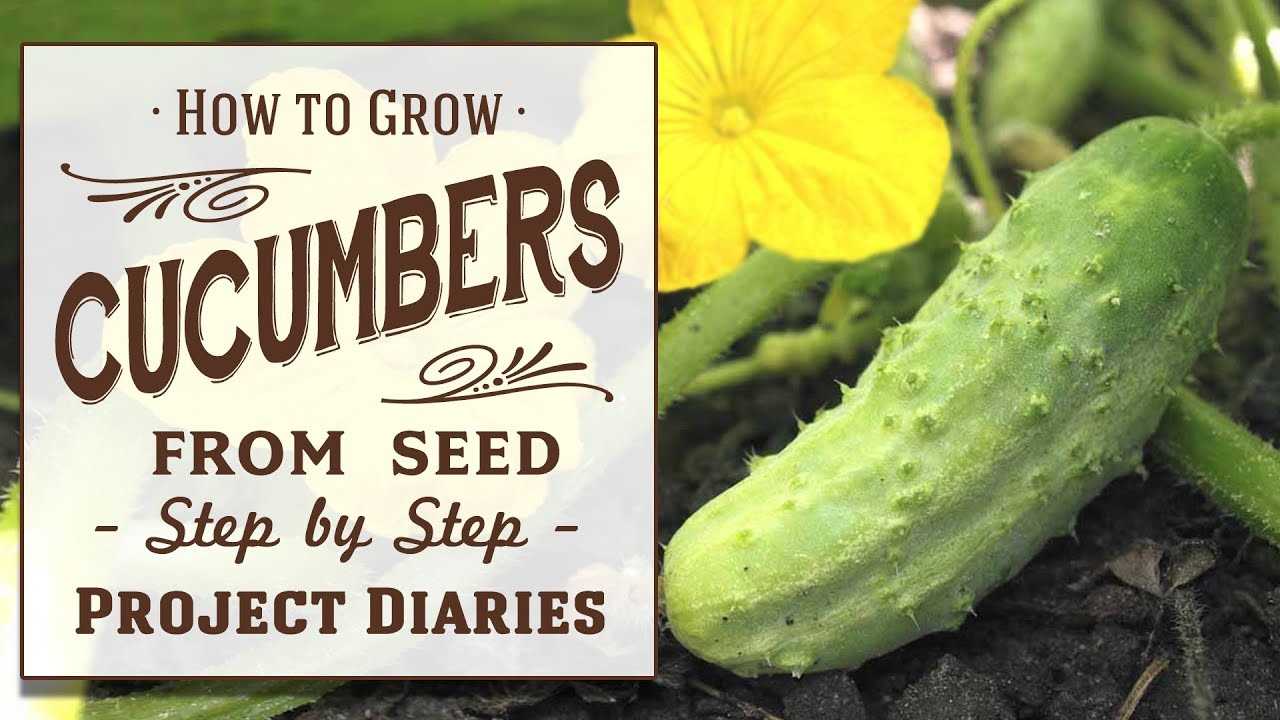
Before making a final decision, take the time to read reviews and recommendations from other gardeners. This can provide valuable insight into the flavor, yield, and overall performance of different cucumber varieties. Look for varieties that consistently receive positive feedback from gardeners in your region.
6. Purchase high-quality seeds
Lastly, always purchase high-quality cucumber seeds from reputable seed companies. This will help ensure that you are starting with seeds that have been properly stored and have a high germination rate. Saving seeds from your own cucumbers can also be a cost-effective option if you are interested in seed saving.
By considering these factors and doing a little research, you can choose the right cucumber seed for your vegetable garden and enjoy a bountiful harvest of fresh cucumbers. Happy gardening!
Preparing the Soil for Cucumber Seeds
Before planting cucumber seeds, it’s essential to prepare the soil to provide the best growing conditions for your plants. Here are some important steps to follow:
1. Clear the area
Start by clearing the planting area of any weeds, rocks, and debris. This will help create a clean and organized space for your cucumber plants to grow.
2. Loosen the soil
Using a rake or a garden fork, loosen the soil in the planting area. This will help improve drainage and allow the cucumber roots to penetrate the soil easily. Avoid compacted soil, as it can hinder plant growth.
3. Amend the soil
It’s beneficial to amend the soil with organic matter, such as compost, before planting cucumber seeds. This will provide essential nutrients to the plants and improve soil structure. Mix the compost into the top few inches of soil using a garden fork or a tiller.
4. Test the soil pH
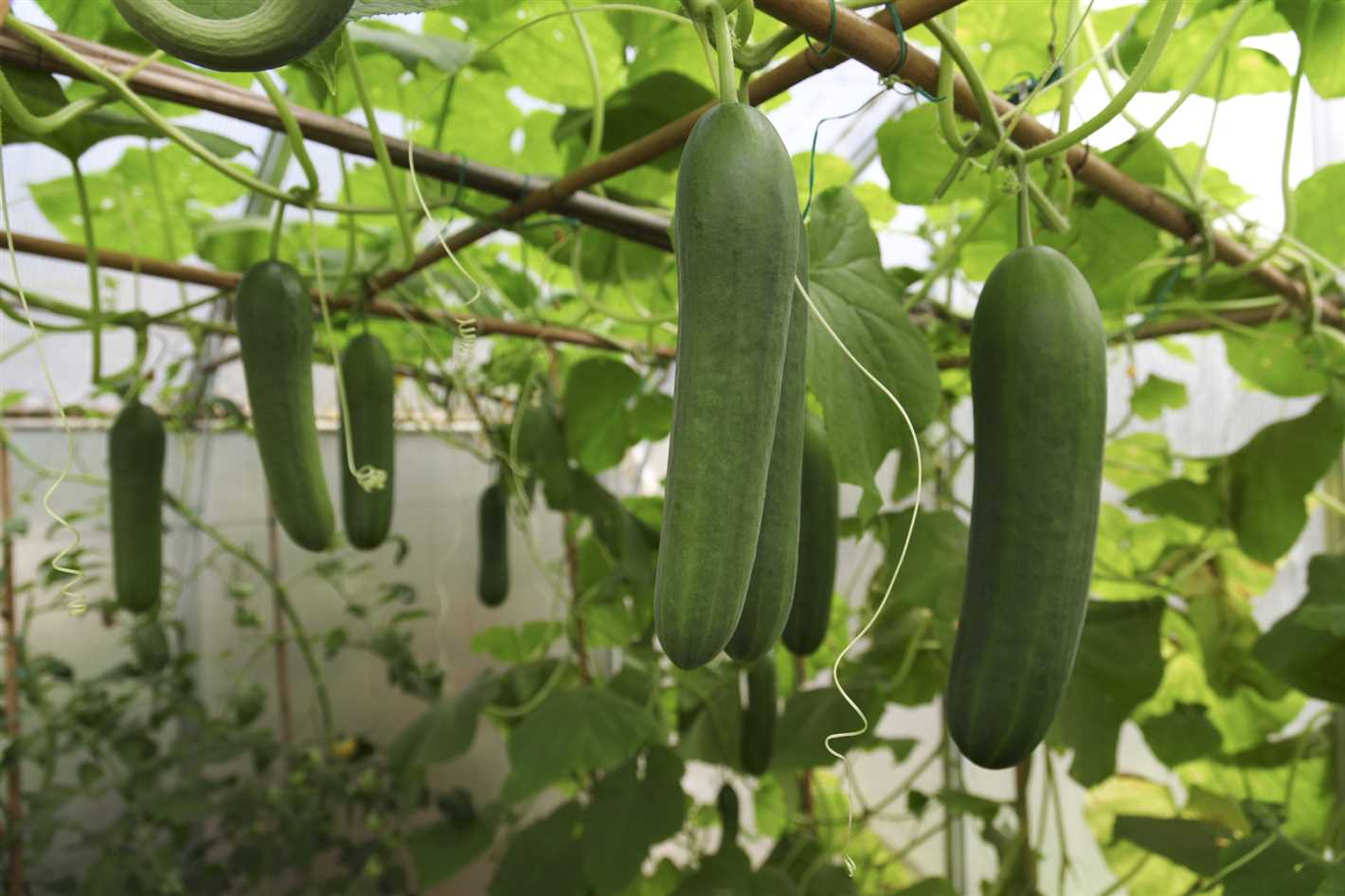
Cucumbers prefer slightly acidic soil, with a pH between 6.0 and 7.0. Test the soil pH using a soil testing kit, available at garden centers. If the pH is too high, you can lower it by adding sulfur or peat moss to the soil.
5. Provide drainage
Cucumbers are prone to root rot if the soil is overly wet. Ensure proper drainage by creating raised beds or adding organic matter like compost or sand to improve soil structure. Avoid planting cucumbers in low-lying areas where water tends to accumulate.
6. Fertilize the soil
Prior to planting cucumber seeds, apply a balanced fertilizer according to package instructions. This will provide the necessary nutrients for healthy plant growth. Avoid using excessive amounts of nitrogen, as it can promote excessive foliage growth at the expense of fruit development.
7. Water the soil
Moisten the soil thoroughly before planting cucumber seeds. This will create a favorable environment for seed germination. Be careful not to oversaturate the soil, as it can lead to rotting of the seeds.
By following these steps to prepare the soil, you will provide your cucumber plants with a healthy and fertile growing environment. This will increase the chances of a successful cucumber harvest in your vegetable garden.
Planting Cucumber Seeds
Cucumbers are warm-weather vegetables that thrive in full sun and well-drained soil. To ensure a successful cucumber harvest, it is important to properly plant cucumber seeds in your vegetable garden. Here are some expert tips and advice for planting cucumber seeds.
1. Choose an appropriate location:
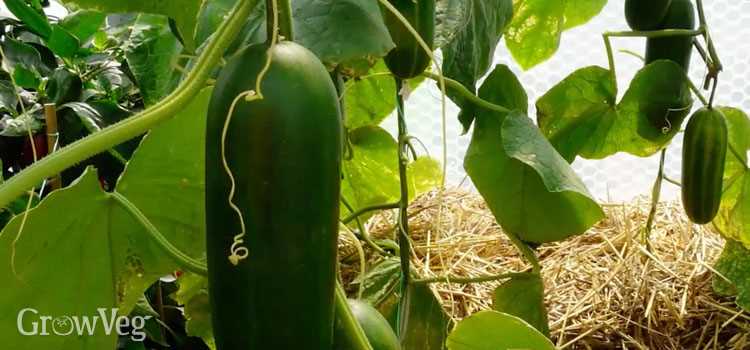
Cucumbers require at least 6-8 hours of direct sunlight daily. Choose a spot in your garden that receives full sun throughout the day. Additionally, cucumbers need well-drained soil, so ensure that the chosen planting location has good drainage.
2. Prepare the soil:
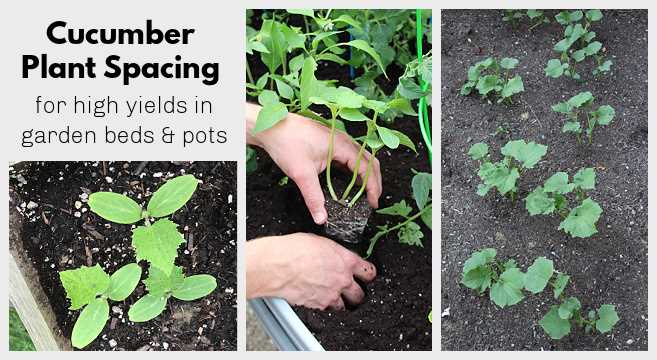
Before planting cucumber seeds, prepare the soil by removing any weeds or debris. Loosen the soil to a depth of about 12 inches and mix in compost or well-rotted manure to enrich the soil. This will provide the cucumber plants with the necessary nutrients for healthy growth.
3. Plant cucumber seeds:
Sow cucumber seeds directly into the prepared soil. Make sure to plant the seeds at a depth of about 1 inch and space them about 12 inches apart in rows that are 3-4 feet apart. Alternatively, you can plant cucumber seeds in hills or mounds, with 3-4 seeds per mound.
4. Water regularly:
Keep the soil consistently moist but not waterlogged during the germination and growth stages. Cucumber plants require regular watering, especially during hot and dry periods. Water at the base of the plants to avoid wetting the leaves, as this can lead to fungal diseases.
5. Provide support:
Cucumbers are vining plants that benefit from vertical support. Consider installing trellises, stakes, or cages to help support the cucumber plants as they grow. This will help keep the plants off the ground, reduce the risk of diseases, and make harvesting easier.
6. Mulch around the plants:
Applying a layer of mulch around the cucumber plants can help conserve moisture, suppress weeds, and regulate soil temperature. Use organic mulch, such as straw or shredded leaves, and spread it around the base of the plants, being careful not to cover the stems.
7. Fertilize as needed:
During the growing season, cucumbers benefit from regular feeding. Apply a balanced fertilizer according to the package instructions, or use organic fertilizers such as compost or well-rotted manure. Be careful not to over-fertilize, as this can lead to excessive vegetative growth and reduced fruit production.
8. Monitor for pests and diseases:
Keep a close eye on your cucumber plants for any signs of pests or diseases, such as cucumber beetles or powdery mildew. If necessary, take appropriate measures to control or treat the issue, such as using insecticidal soap or organic fungicides.
By following these expert tips and advice, you can ensure successful cucumber seed planting in your vegetable garden. Enjoy a bountiful harvest of fresh, homegrown cucumbers!
Caring for Cucumber Seedlings
Once your cucumber seedlings have emerged, it’s important to provide them with proper care to ensure healthy growth and abundant harvest. Here are some key tips for caring for cucumber seedlings:
1. Watering
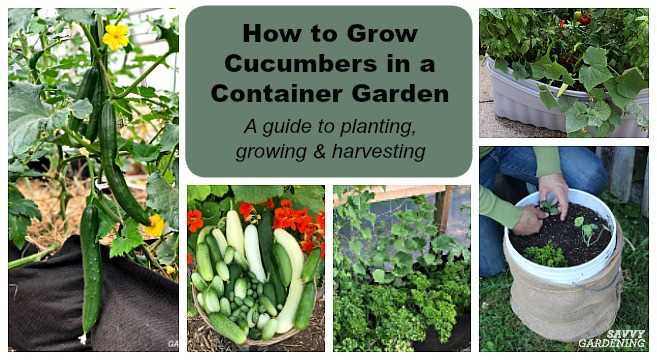
- Water your cucumber seedlings regularly, keeping the soil consistently moist but not waterlogged.
- Avoid overhead watering as it can lead to the development of fungal diseases. Instead, water at the base of the plants or use a drip irrigation system.
- Water deeply, providing enough moisture to reach the roots.
2. Fertilizing
- When the seedlings have grown their first true leaves, begin fertilizing them.
- Use a balanced liquid fertilizer or a slow-release granular fertilizer according to the package instructions.
- Apply the fertilizer evenly around the base of the plants, being careful not to over-fertilize.
3. Providing Support
- Cucumber plants are climbers and need support to grow vertically.
- Install a trellis or provide stakes for the plants to climb on.
- Guide the vines towards the support structure as they grow.
4. Pruning
- Regularly prune off any yellow or wilted leaves to maintain plant health.
- Remove any side shoots or suckers that may develop in the leaf axils.
- Prune the plants to allow for better air circulation and to prevent overcrowding.
5. Pest and Disease Control
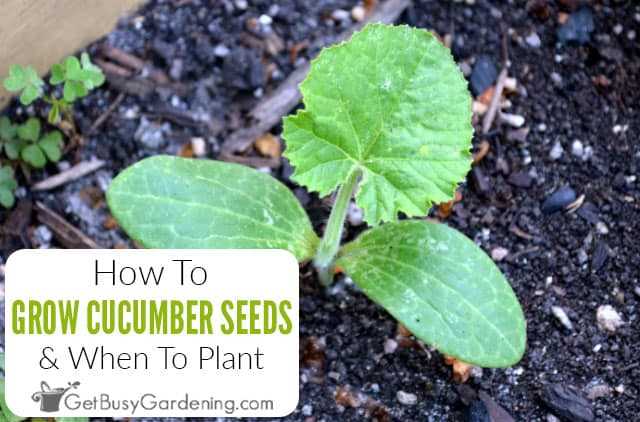
- Monitor your cucumber seedlings regularly for signs of pests or diseases.
- Control pests like aphids, cucumber beetles, and spider mites using organic insecticides or by introducing beneficial insects.
- Prevent diseases like powdery mildew and downy mildew by providing proper air circulation and avoiding overhead watering.
6. Harvesting
- Monitor your cucumber plants for ripe fruits.
- Harvest cucumbers when they reach the desired size, typically around 6-8 inches in length for slicing cucumbers.
- Cut the cucumbers from the vine using a sharp knife or shears to avoid damaging the plant.
By following these care tips, you can ensure the successful growth of your cucumber seedlings and enjoy a bountiful harvest of fresh cucumbers.
Watering and Fertilizing Cucumber Plants
Cucumber plants require regular watering and appropriate fertilization to thrive and produce a healthy crop. Here are some expert tips and advice on how to properly water and fertilize your cucumber plants.
Watering
Cucumbers are comprised mostly of water, so it’s essential to keep the soil consistently moist. Here are some watering tips:
- Water deeply: Make sure to water the plants deeply, so the moisture reaches the roots. Shallow watering may result in shallow root development.
- Frequency: Water your cucumber plants regularly, especially during dry periods. Aim for about 1-2 inches of water per week, either from rainfall or supplemental watering.
- Timing: It’s best to water in the early morning or late afternoon to reduce evaporation and fungal diseases. Avoid watering in the evening as it can lead to prolonged leaf wetness.
- Avoid wet leaves: Direct the water to the soil and avoid wetting the leaves. Wet leaves can encourage fungal diseases like powdery mildew.
Fertilizing
Cucumber plants are heavy feeders, meaning they require regular fertilization to meet their nutrient needs. Use the following tips to fertilize your cucumber plants:
- Soil testing: Before fertilizing, it’s advisable to conduct a soil test to determine the nutrient levels and pH of your soil. This will help you make informed decisions about which fertilizers to use.
- Nitrogen-rich fertilizer: Cucumber plants benefit from a fertilizer that is high in nitrogen to promote leaf and stem growth. Look for a fertilizer with a higher first number on the package, indicating a higher nitrogen content.
- Timing: Apply a balanced granular fertilizer at planting time or when the plants start to develop their first true leaves. Follow the package instructions for the recommended application rates.
- Side dressing: Once the plants are established, you can side dress them with a nitrogen-rich fertilizer about 3-4 weeks after planting. Apply the fertilizer a few inches away from the base of the plants and lightly incorporate it into the soil.
Remember to follow the instructions on the fertilizer package and avoid over-fertilizing, as this can lead to excessive foliage growth and poor fruit production.
By ensuring proper watering and fertilization, you can maximize the growth and productivity of your cucumber plants, resulting in a bountiful harvest of fresh and delicious cucumbers.
Trellising and Supporting Cucumber Vines
Cucumber vines, known for their vigorous and sprawling growth, can benefit from trellising and support in the vegetable garden. Trellising cucumbers not only helps save space, but also improves air circulation, reduces disease incidence, and makes harvesting easier. Here are some methods for trellising and supporting cucumber vines:
1. A-Frame Trellis
An A-frame trellis is a simple and effective method for supporting cucumber vines. It consists of two vertical stakes or posts with a horizontal crossbar. As the cucumber vines grow, gently train them to climb up the trellis, using twine or plant clips to secure them if necessary.
2. Cattle Panel or Wire Mesh
Using a cattle panel or wire mesh is another popular option for trellising cucumber vines. Install the panel or mesh securely between two posts or stakes, making sure it is tall enough to accommodate the height of the cucumber plants. As the vines grow, guide them to weave through the panel or mesh for support.
3. Teepee Trellis
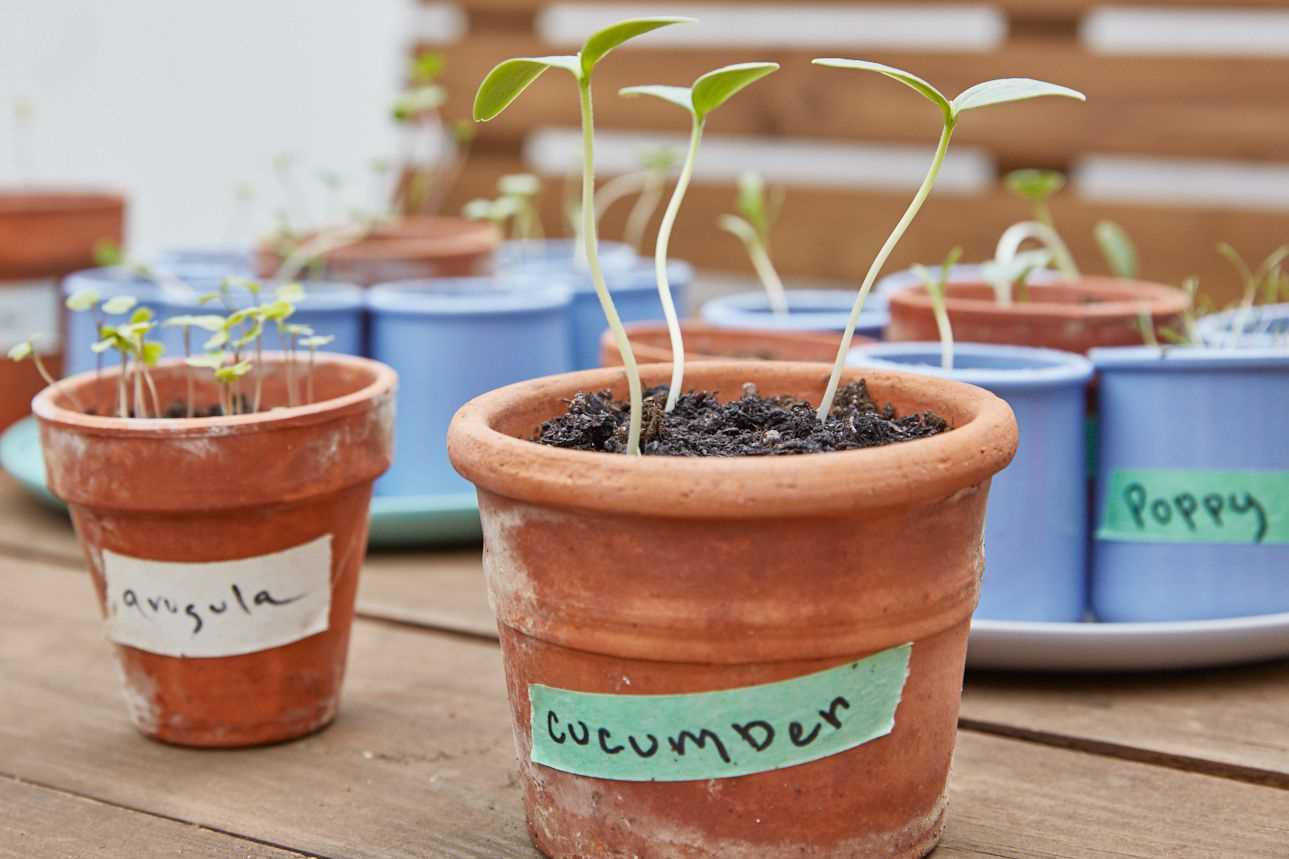
A teepee trellis is a creative and visually appealing way to support cucumber vines. Use three or four long stakes or bamboo poles and tie them together at the top to form a teepee shape. Plant the cucumber seeds or seedlings around the base of the teepee and train the vines to climb up the poles.
4. String Trellis
A string trellis is a versatile and space-saving option for supporting cucumber vines. Attach a series of vertical strings to a horizontal support, such as a fence or wooden frame. As the cucumber vines grow, gently tie them to the strings, allowing them to climb upwards.
5. Tomato Cage
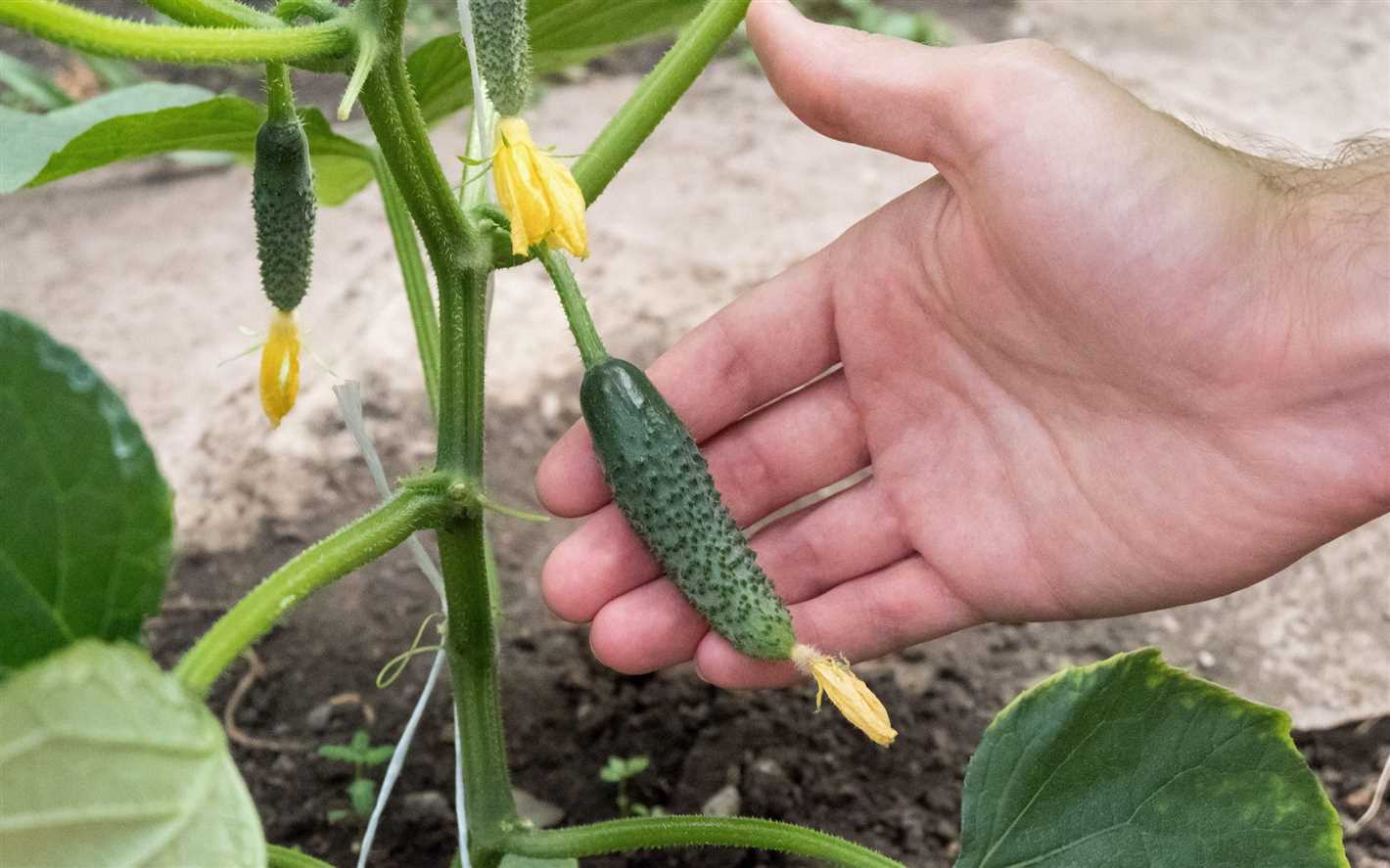
If you have extra tomato cages on hand, they can be repurposed to support cucumber vines. Place the tomato cage over the cucumber plant and gently train the vines to grow upwards through the openings in the cage. Secure any loose or wayward vines with plant ties or twine.
Remember to regularly check and adjust the trellis or support system as the cucumber vines grow. Proper trellising and support will help ensure healthier plants, increased yields, and easier maintenance in your vegetable garden.
How to Harvest Cucumbers
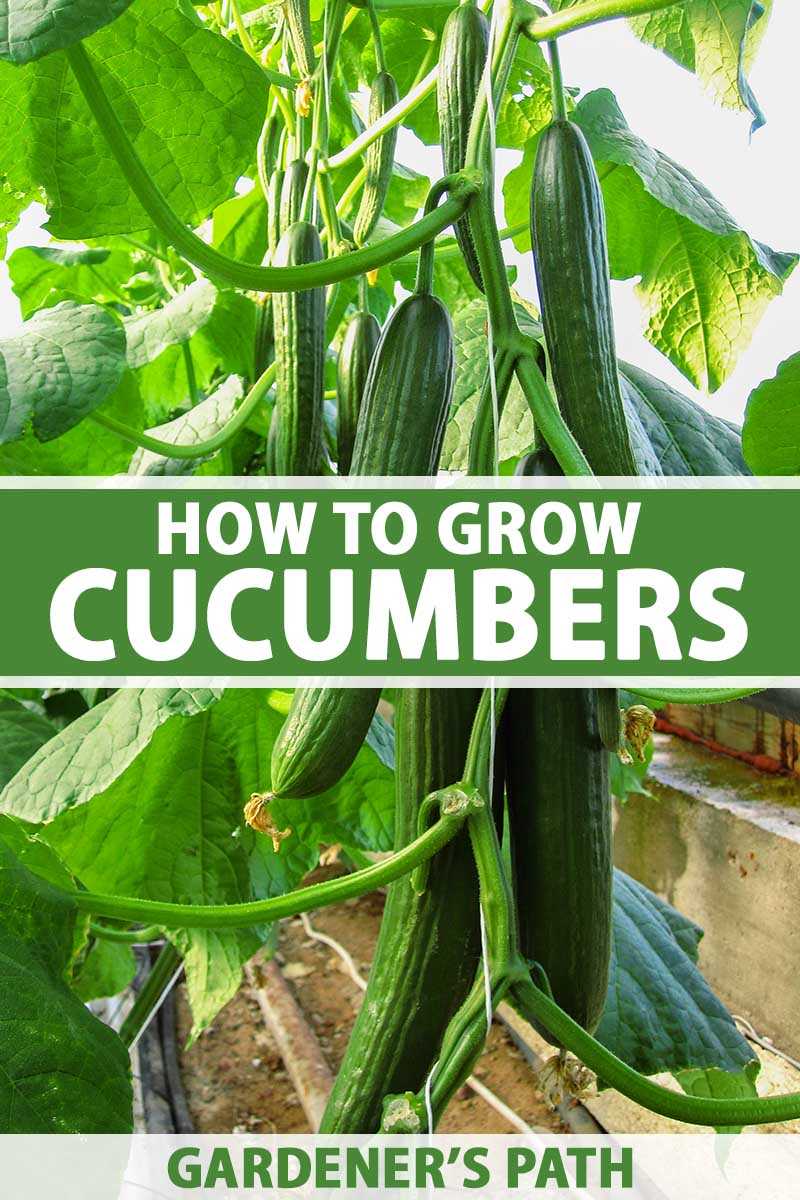
Harvesting cucumbers at the right time is essential to ensure you pick them when they are at their peak flavor and texture. Here are some tips on how to harvest cucumbers from your vegetable garden:
1. Check for Size and Color
- Look for cucumbers that have reached their mature size and color. This can vary depending on the cucumber variety, but most cucumbers are ready to harvest when they reach about 6 to 8 inches in length.
- For slicing cucumbers, pick them when they are dark green and firm. Avoid cucumbers that have turned yellow or have wrinkled skin.
- Pickling cucumbers are usually harvested when they are smaller, around 2 to 4 inches in length. They should also have a deep green color.
2. Use a Twist-and-Snap Method
- Gently hold the cucumber near the base of the fruit.
- Slowly twist the cucumber upward and outward from the vine.
- The cucumber should snap off cleanly, leaving a short stem attached to the vine.
3. Be Gentle
- Avoid pulling or tugging on the cucumbers, as this can damage the vine or break off the stems of nearby undeveloped cucumbers.
- Handle the harvested cucumbers with care to prevent bruising or other damage.
4. Harvest Regularly
- Check your cucumber plants every 1-2 days during peak season, as cucumbers can grow quickly.
- Harvesting cucumbers regularly promotes continuous production and prevents overly mature cucumbers from inhibiting the growth of new ones.
5. Remove Overripe Cucumbers
- Discard any overripe cucumbers that have turned yellow, have a mushy texture, or show signs of decay.
- Leaving these cucumbers on the vine can attract pests and diseases to your garden.
6. Store Properly
- After harvesting, store cucumbers in a cool and dry place, preferably in the refrigerator.
- Proper storage helps preserve the cucumbers’ flavor and extends their shelf life.
By following these harvesting tips, you can enjoy the fresh and delicious taste of homegrown cucumbers straight from your vegetable garden!
Common Pests and Diseases in Cucumber Plants
- Aphids: These small insects are a common pest in cucumber plants. They feed on the sap of the plants, causing them to wilt and become weak. To prevent aphid infestation, regularly inspect your plants and use insecticidal soap or neem oil to eliminate them.
- Cucumber beetles: These beetles can devour cucumber plants and spread bacterial wilt, a disease that can kill the plants. To control cucumber beetles, use floating row covers, insecticides, or companion planting with plants that repel them, such as radishes or tansy.
- Powdery mildew: This fungal disease can affect cucumber plants, causing a white, powdery coating on the leaves. It can inhibit photosynthesis and reduce plant growth. To prevent powdery mildew, ensure proper air circulation, water plants at the base, and remove infected leaves.
- Downy mildew: Another fungal disease that affects cucumber plants, downy mildew causes yellow patches on the leaves and a fuzzy growth on the undersides. To prevent downy mildew, avoid overhead watering, provide good air circulation, and space plants properly to allow for drying between watering.
- Root rot: This disease is caused by fungi that attack the roots of cucumber plants, leading to rot and wilting. To prevent root rot, plant in well-draining soil and avoid overwatering. Proper crop rotation and the use of fungicides can also help control this disease.
Closely monitoring your cucumber plants for signs of pests and diseases is crucial for maintaining their health and productivity. Taking appropriate prevention measures and promptly treating any issues can help ensure a successful cucumber harvest.
“Question-Answer”
Can cucumbers be grown from seeds in a vegetable garden?
Yes, cucumbers can be easily grown from seeds in a vegetable garden. It is a cost-effective and rewarding way to grow this vegetable.
What is the best time to plant cucumber seeds in a vegetable garden?
The best time to plant cucumber seeds in a vegetable garden is after the last frost date in your area, when the soil has warmed up to at least 60°F (15°C).
What are some tips for preparing the soil before planting cucumber seeds?
Before planting cucumber seeds, it is important to prepare the soil by adding organic matter, such as compost, to improve fertility and drainage. The soil should also be loosened and smoothed out to create a level surface for planting.
How deep should cucumber seeds be planted in the soil?
Cucumber seeds should be planted about 1 inch (2.5 cm) deep in the soil. Planting them too deep can result in slow germination or the seeds not germinating at all.
What are some common problems that can occur when growing cucumbers from seeds?
Some common problems that can occur when growing cucumbers from seeds include poor germination, overcrowding, and pest or disease infestations. Proper care and maintenance can help minimize these problems.
How long does it take for cucumber seeds to germinate?
Cucumber seeds typically take 7 to 10 days to germinate, but it can vary depending on the variety and growing conditions. Once the seeds have germinated, they will continue to grow rapidly.







